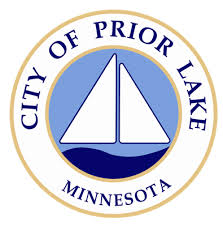Prior Lake Water Softener & Drinking Water Guide

Four of the existing wells are between 345 and 372 feet deep and tap into the Jordan aquifer, while the fifth draws from the Franconia-Ironton-Galesville (FIG) aquifer which is 630 feet below ground. The city’s water supply system is capable of producing well over 8 million gallons per day.
Rusty, Discolored Water in Prior Lake
Periodic brown/black colored water is common in Prior Lake water, and is caused by a higher than normal level of Manganese. Manganese will cause brown stains in dishes, clothing, tubs, fixtures, and appliances. The city does offer a free cleaning agent to help remove these stains.
- Soft Water
- National Hardness Average
- Prior Lake Water Hardness
Prior Lake Water Softener Recommendations
The national average for water hardness is 5gpg (grains per gallon). Prior Lake water hardness is 19-21gpg, which is 4x harder than average.
A water softener will protect your water heater, plumbing, and appliances from hard water damage. A high efficiency water softener will offer the same protection, but will use far less water and salt.
Need the Right Water Softener or Filter for Your Home in Prior Lake, MN?
Contact us for a FREE water test and site inspection. We’ll get you a FREE quote to help you get the water quality you want.
Prior Lake Water Reports
The City of Prior Lake, MN does regular water testing and publishes the results in Annual Drinking Water Reports. These reports explain which water contaminants, and what levels have been found.
The EPA has two standards for drinking water contaminants:
MCL: Maximum Contaminant Level
The legal limit for a certain contaminant
MCLG: Maximum Contaminant Level GOAL
The level with ZERO HEALTH RISKS, aka the “Health Limit”
All water contaminants meet the EPA’s “Legal Limit”. Contaminants that exceed the EPA’s Health Limit have been highlighted below.
Inorganic Contaminants
Inorganic contaminants include natural and manmade salts and metals. You are mostly exposed to inorganics through drinking water, most do not easily pass through skin. Carbon Filters (refrigerator and faucet filters) have almost ZERO impact on these contaminants. Reverse Osmosis very effective at removing inorganic contaminants.
| Contaminant | Amount Found | Health Limit | Legal Limit | Potential Effects |
|---|---|---|---|---|
| Arsenic | 4.62-8.11 | 0 | 10 | Skin damage or problems w/ circulatory systems, increased risk of cancer |
| Barium | 0.03-0.37 | 2 | 2 | Increase in blood pressure |
| Cyanide | 190 | 200 | 200 | Nerve damage, thyroid problems |
| Fluoride | 1.0-1.4 | 4 | 4 | Bone disease;children may get mottled teeth |
| Manganese | 0.074 | 0.05 | 0.5 | Lowered IQ, black stains, appliance damage |
Organic Contaminants
Organic contaminants can come from either natural sources like algae, or man-made chemicals. You can be exposed through drinking water, absorption through skin (bathing), and inhalation. This makes a Hybrid Filter System, or Whole House Carbon Filter a good preventative tool.
| Contaminant | Amount Found | Health Limit | Legal Limit | Potential Effects |
|---|---|---|---|---|
| Ethylbenzene | 0.12-0.8 | 700 | 700 | Liver or kidney problems |
| Toluene | 0.6-6.6 | 100 | 100 | Nervous system, liver, or kidney problems |
| Xylenes | 0.12-1.1 | 1.8 | 100 | Nervous system damage |
Disinfectants and Disinfection Byproducts
Disinfectants are added to kill bacteria. Disinfectants like Chlorine react with other chemicals and create “Disinfection Byproducts. These chemicals enter the body through inhalation, absorption through skin, and drinking water. A Whole House Carbon Filter is a good preventative tool in addition to a Drinking Water System for these compounds.
| Contaminant | Amount Found | Health Limit | Legal Limit | Potential Effects |
|---|---|---|---|---|
| Chlorine | 0.83-2.02 | 4 | 4 | Eye/nose irritation; stomach discomfort |
| Chloroform | 2.96-15 | 5.7 | 80 | Nervous system depression, increase in kidney and liver tumors |
| Haloacetic Acids | 3.3-3.4 | 0 | 80 | Increased risk of cancer |
| Total Trihalomethanes | 6-20.4 | 0 | 60 | Increased risk of cancer |
Radionuclide Contaminants
Radionuclides in water may occur naturally, or come from oil and gas production or mining activities. These can be inhaled, or consumed through drinking water.
| Contaminant | Amount Found | Health Limit | Legal Limit | Potential Effects |
|---|---|---|---|---|
| Alpha Emitter | 4.6-6.2 | 0 | 15.4 | Increased risk of cancer |
| Combined Radium | 2.8-6.1 | 0 | 5 | Increased risk of cancer |
| Radon | 298-719 | 0 | NA | Increased risk of cancer |
This information was compiled from Prior Lake’s water treatment reports, the Environmental Protection Agency(EPA), Minnesota Department of Health(DOH), World Health Organization(WHO), and Environmental Working Group(EWG). Please contact us if there are any missing contaminants, or levels that differ from those outlined on this page.
